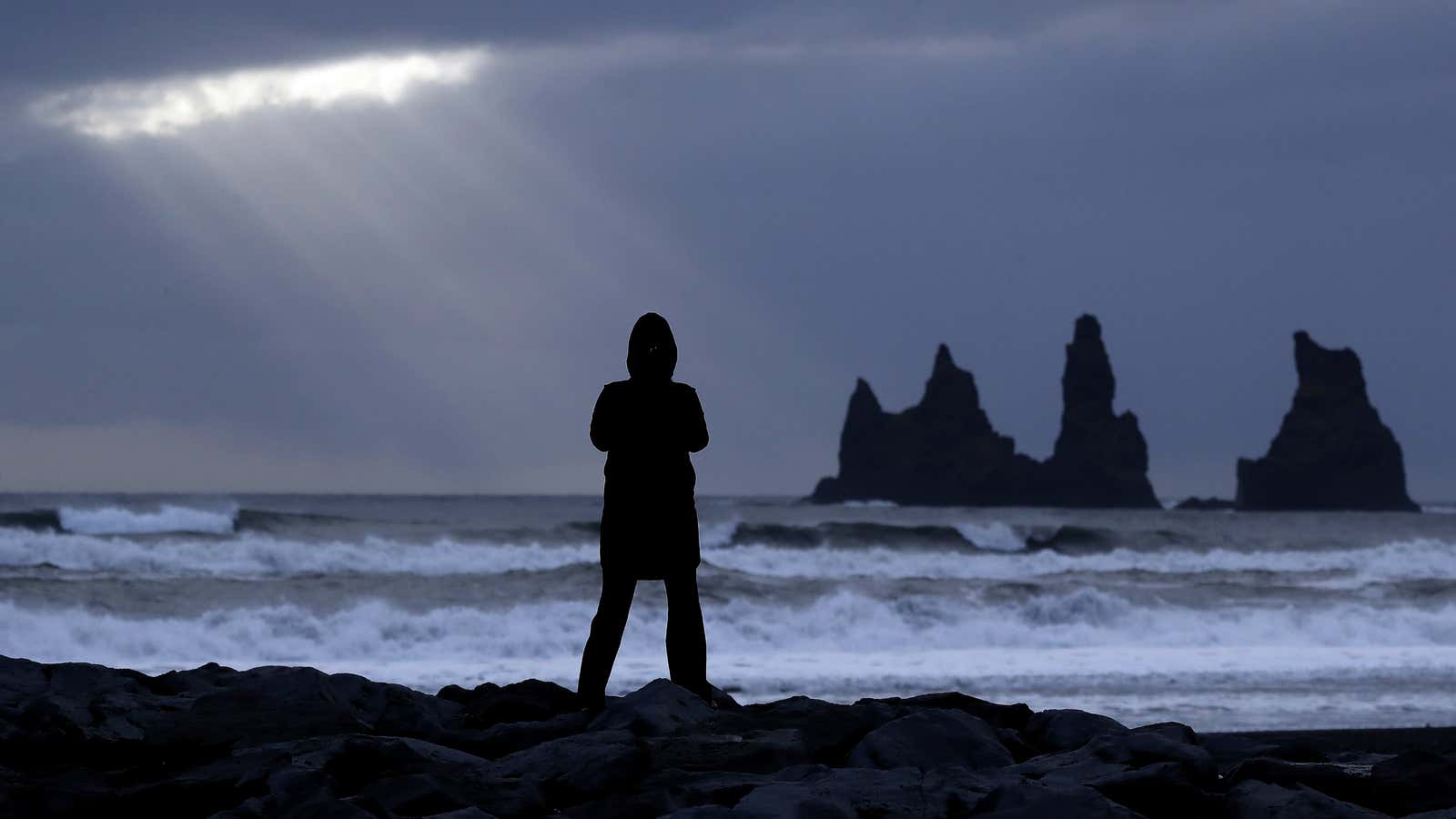The imagery is intense: A sun seemingly stamped from the sky, acid rain leaking into homes, and widespread famine as the land sank into the sea. These are accounts of the weather around 940 CE, shortly after volcanic activity in Iceland triggered a massive lava flood.
Now, well over a thousand years later, a team led by researchers at the University of Cambridge is using modern-day tools to pin down an exact date for that volcanic activity, as well as how it may have played a role in fundamentally reshaping religion in Iceland. The work was published this week in the journal Climatic Change.
By analyzing layers of glacial ice and tree rings, researchers were able to pinpoint 939 CE as the year a major volcanic event—the Eldgjá (“fire gorge”) lava flood—pushed 20 cubic km (7.7 square miles) of lava to the Earth’s surface, belching thick clouds of sulfurous gases from the Katla volcano and into the atmosphere. The event blanketed parts of southern Iceland and swaths of the European continent in a haze, blocking sunlight and driving winter temperatures to below-average levels.
“Human suffering in the wake of Eldgjá was widespread,” the study states. “From northern Europe to northern China, people experienced long, hard winters and severe spring-summer drought.” Indeed, texts from Ireland, Italy, Germany, and China all describe particularly harsh winters, a season in which the sun appeared blotted out of the sky or weak, and inner-Mongolia experienced 50 continuous days of snow.
The resulting maladies included locust infestations, the death of livestock animals, and pockets of famine in regions that are modern-day Germany, Iraq, and China. As for Iceland, it was only 65 years earlier that the island nation was first settled by Vikings and Celts—giving that small band of pagan worshippers a front-row seat to wiped-out agricultural land and oppressive smog. There is no surviving literature or Icelandic text from that specific period to give researchers any account of the eruption or its fallout.
However, with an accurate eruption date and Iceland’s most famous medieval poem—Vǫluspá, composed years later around 961—researchers have recently been able to piece together details that could help tell the story of how that eruption impacted the Icelandic culture of the time. The poem tells the story of Iceland’s rejection of pagan gods for the adoption of belief in one, Christian god. Details in that poem, though, give researchers reason to believe the volcanic activity and the devastation experienced in its aftermath could have played a role in that conversion.
“The poem describes how the revered pagan god Odin raises a prophetess from the dead,” the researchers write. “She foretells the end of the pagan pantheon and the coming of a new (and singular) god in a series of portents, one being the rearing of a monstrous wolf that will swallow the Sun.”
The poem itself gives an incredible, apocalyptic, and seemingly first-hand account of the dramatic aftermath of the eruption. Translated from the original Old Norse:
The sun starts to turn black, land sinks into sea; the bright stars scatter from the sky. Steam spurts up with what nourishes life, flame flies high against heaven itself.
Other parts of the poem describe “venom-drops flowed in through the roof-holes,” which was perhaps a description of acid rain, the study states. Taken as a whole, the researchers suggest the powerful eruption may have acted as a catalyst for the cultural changes that swept Christianity to the forefront of religious acceptance in Iceland.
This wasn’t the last time volcanic activity in Iceland would snarl everyday life for people on the island and in Europe. In 1783, the eruption of the Laki volcano wiped out three quarters of the sheep and cattle in Iceland. The resulting famine was so bad that leaders at the time considered evacuating the entire nation from the island. More recently, in 2010, the eruption of Eyjafjallajökull pumped enough ash into European airspace that it clogged air travel routes for more than a week. And in 2015, the Bardarbunga volcano spewed lava for six months, seeping out enough magma from the earth to cover the an area of Iceland equivalent to Manhattan island.
